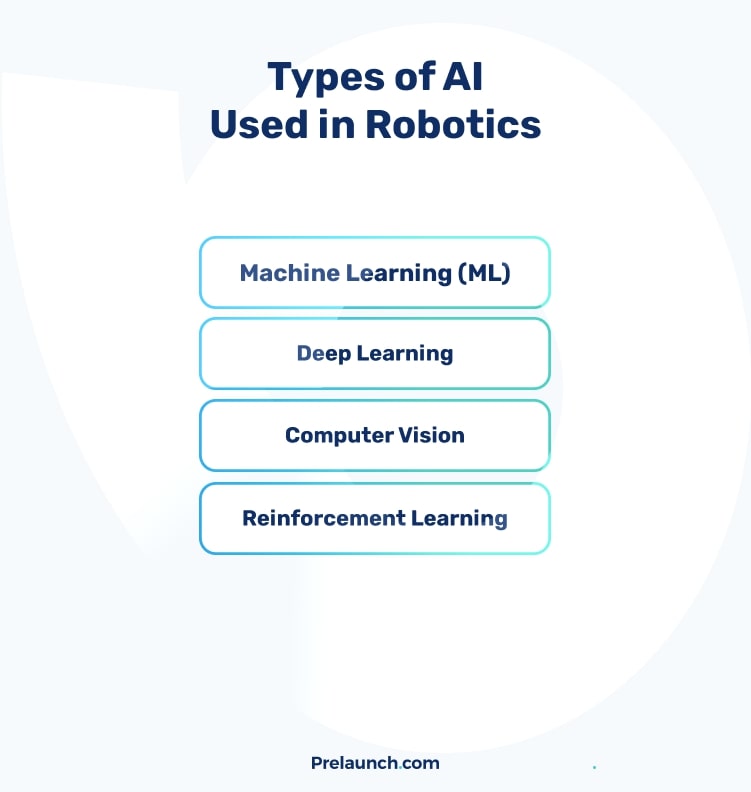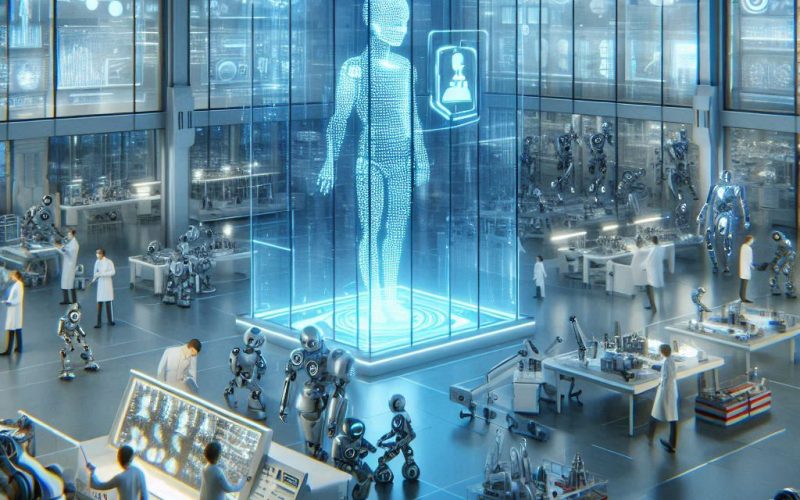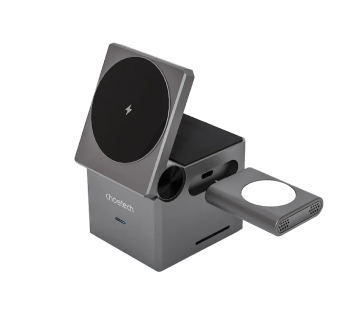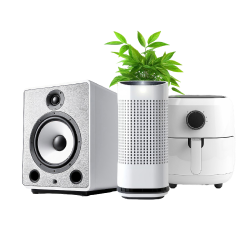The rapid advancements in artificial intelligence are revolutionizing various industries, with robotics at the forefront of this transformation. Imagine a world where robots not only perform repetitive tasks but also learn, adapt, and make decisions in real time, enhancing efficiency and redefining the way we work and live. This is not a scene from a sci-fi movie but a reality being shaped by the convergence of AI and robotics.
The integration of AI in robotics is not just about improving productivity; it's about creating intelligent machines that can solve complex problems, interact naturally with humans, and operate autonomously in dynamic environments.
From manufacturing floors to hospital operating rooms, AI-powered robots are making significant strides, pushing the boundaries of innovation and opening new possibilities across various sectors.
Looking ahead, we will explore the future trends in AI in robotics, from advancements in machine learning to the rise of autonomous systems and personalized robots.
Table of Contents
What Is the Difference Between AI and Robotics?
Before diving into the details, it's crucial to understand the distinction between AI and robotics. Robotics involves designing, constructing, and operating robots—machines capable of performing tasks autonomously or semi-autonomously. On the other hand, artificial intelligence in robotics refers to the use of AI technologies to enhance the capabilities of robots, enabling them to learn, adapt, and make decisions based on data.
Robots can operate without AI, but when integrated, AI in robotics allows machines to handle complex tasks that require cognition, learning, and adaptation. For instance, a robot without AI might perform repetitive tasks in a factory, whereas a robot with AI can optimize its performance, adjust to new conditions, and even predict maintenance needs.
Key Differences: AI vs. Robotics
To fully grasp the groundbreaking impact of combining AI and robotics, it is essential to understand their distinct roles and functions:
- Purpose: Robotics focuses on the design, construction, and operation of physical robots. These machines are engineered to perform specific tasks, often involving physical interaction with the environment. In contrast, artificial intelligence revolves around creating algorithms capable of learning, reasoning, and decision-making.
- Functionality: Robots can be pre-programmed to execute repetitive, predefined tasks without any form of AI. Think of a simple assembly line robot that performs the same action repeatedly. AI, however, brings a new level of functionality by enabling robots to process information, learn from experiences, and adapt to new situations. For example, an AI-powered robot in a warehouse can adjust its path in real-time to avoid obstacles and optimize its route.
- Applications: Robotics can function independently of AI, exemplified by basic mechanical robots used in manufacturing for decades. These robots do not require AI to perform their tasks. Conversely, AI can be applied across various domains without necessarily involving robots, such as in data analysis, predictive modeling, and natural language processing.
Understanding these differences underscores how the convergence of AI and robotics leads to enhanced functionality and broader applications. By combining the physical capabilities of robots with the cognitive abilities of AI, we can develop machines that not only perform tasks with precision but also adapt, learn, and make decisions autonomously.
Types of AI Used in Robotics

Several types of AI are utilized in robotics, each offering unique capabilities and benefits:
Machine Learning (ML)
Machine learning allows robots to learn from data and improve their performance over time. Techniques like supervised, unsupervised, and reinforcement learning enable robots to make predictions, identify patterns, and optimize their actions based on past experiences. For example, a robotic arm in a manufacturing plant can learn the most efficient way to assemble parts by analyzing historical data.
Deep Learning
A subset of ML, deep learning involves neural networks with multiple layers that can process vast amounts of data. This is particularly useful for image and speech recognition, enabling robots to understand and interpret visual and auditory inputs accurately. In medical applications, deep learning helps robots identify anomalies in medical images, assisting in early diagnosis.
Natural Language Processing (NLP)
NLP enables robots to understand and respond to human language, facilitating more intuitive human-robot interactions. This is crucial for applications like customer service robots and personal assistants. For instance, a robot equipped with NLP can assist customers in a store by answering questions and providing product information.
Computer Vision
Computer vision technology allows robots to interpret and understand visual information from the world. By using cameras and sensors, robots can identify objects, navigate environments, and perform tasks with precision. In agriculture, robots with computer vision can distinguish between crops and weeds, ensuring accurate application of herbicides.
Reinforcement Learning
This type of ML involves training robots through trial and error. Robots receive feedback from their actions and learn to make better decisions over time, which is essential for tasks requiring adaptability and problem-solving. An example is a robot learning to navigate a complex environment by continuously adjusting its path based on obstacles encountered.
Applications of AI in Robotics
AI-powered robots are making significant impacts across various industries. Here are some notable applications:
Manufacturing
AI in robotics is transforming manufacturing by optimizing production lines, improving quality control, and predicting maintenance needs. Robots equipped with AI can handle complex assembly tasks, detect defects, and adjust processes in real time. For instance, AI-driven robots can inspect products for defects at a microscopic level, ensuring high-quality standards are maintained.
Healthcare
In healthcare, AI-enabled robots assist in surgeries, rehabilitation, and patient care. Surgical robots, guided by AI, can perform delicate procedures with high precision. Additionally, AI helps diagnose diseases, monitor patient health, and manage hospital logistics. Robots in rehabilitation programs can adapt exercises based on patient progress, enhancing recovery outcomes.
Agriculture
AI-driven robots are enhancing agricultural productivity by automating planting, harvesting, and pest control. These robots use computer vision to identify crops and weeds, optimize irrigation, and even predict crop yields. Autonomous tractors can plow fields and plant seeds with minimal human intervention, increasing efficiency and reducing labor costs.
Logistics and Warehousing
AI in robotics streamlines logistics by automating tasks such as sorting, packing, and transporting goods. Autonomous robots navigate warehouses, optimize storage, and ensure efficient order fulfillment. For example, AI-powered robots in Amazon warehouses can quickly locate and transport items to packing stations, speeding up the delivery process.
Retail
In the retail sector, AI-powered robots improve customer service, manage inventory, and enhance the shopping experience. Robots can assist customers, restock shelves, and perform inventory audits with accuracy. Some retail robots equipped with NLP can engage customers in conversation, helping them find products and providing personalized recommendations.
Exploration and Research
AI-enabled robots are used in space exploration, underwater research, and hazardous environments. These robots can operate in extreme conditions, gather data, and perform tasks that are dangerous for humans. For instance, NASA's Mars rovers, equipped with AI, can navigate the Martian terrain and conduct scientific experiments autonomously.
Innovative Consumer Products
AI is also making its way into innovative consumer products, enhancing everyday experiences. For instance, the Board Game Robot brings a new level of interaction to traditional board games by integrating AI to manage and facilitate gameplay, making games more dynamic and engaging. Similarly, WHSP-RING: Instant Voice Chat with AI leverages AI to provide instant voice chat capabilities, offering a seamless communication experience that adapts to users' needs in real-time.
Benefits of AI in Robotics
The integration of artificial intelligence in robotics offers a plethora of advantages that are transforming industries worldwide. Here are some key benefits:
Increased Efficiency
AI enables robots to perform tasks faster and more accurately than humans, leading to higher productivity and reduced operational costs. In manufacturing, for instance, AI-driven robots can operate 24/7 without fatigue, significantly increasing output. This continuous operation ensures that production lines are always running, maximizing efficiency and minimizing downtime.
Enhanced Precision
AI algorithms allow robots to perform tasks with greater precision, reducing errors and improving quality. This is especially critical in industries like healthcare and manufacturing, where precision is paramount. In the pharmaceutical industry, for example, AI-powered robots can measure and mix chemicals with exact accuracy, ensuring the consistency and safety of medications. This precision reduces waste and enhances product quality, leading to better outcomes.
Adaptability
AI-powered robots can learn from their experiences and adapt to new situations, making them ideal for dynamic environments and complex tasks. In logistics, robots equipped with AI can adapt to changes in inventory and optimize storage based on demand patterns. This adaptability ensures that operations remain efficient even as conditions change, reducing the need for constant human intervention and oversight.
24/7 Operation
Unlike humans, robots can operate continuously without fatigue, ensuring constant productivity and faster task completion. Autonomous delivery robots, for example, can transport goods around the clock, ensuring timely deliveries and reducing the need for human labor. This capability is particularly beneficial in industries where continuous operation is essential, such as manufacturing, logistics, and healthcare.
Cost Savings
While the initial investment in AI and robotics can be high, the long-term savings in labor costs, reduced errors, and increased efficiency can be substantial. In agriculture, for instance, AI-driven robots can perform labor-intensive tasks such as planting, harvesting, and weeding, reducing the need for manual labor and lowering operational costs. These cost savings can be reinvested into further technological advancements, creating a cycle of continuous improvement and innovation.
Safety
AI in robotics enhances safety by taking over dangerous tasks and operating in hazardous environments, reducing the risk of injuries and accidents. In construction, for example, robots can perform high-risk tasks such as inspecting structures and handling heavy materials, minimizing the risk to human workers. This improved safety not only protects human workers but also ensures that tasks are performed more consistently and accurately, further enhancing overall operational efficiency.
The myriad benefits of AI in robotics are driving significant advancements across various industries, from manufacturing and healthcare to logistics and agriculture. By leveraging the power of AI, robots are becoming more efficient, precise, adaptable, and safe, transforming how we approach and solve complex problems. As AI technology continues to evolve, the potential for further enhancements and innovations in robotics is immense, promising a future where intelligent robots play an integral role in our daily lives and work.
Challenges and Limitations
Despite the significant advancements, integrating AI in robotics faces several challenges:
High Costs
Developing and implementing AI-powered robots can be expensive, making it difficult for small and medium-sized enterprises to adopt this technology. The cost of advanced sensors, processors, and software can be prohibitive, limiting accessibility.
Technical Complexity
The integration of AI in robotics requires sophisticated hardware and software, along with expertise in both fields. This complexity can pose barriers to adoption. Ensuring seamless communication between AI algorithms and robotic hardware is crucial for optimal performance.
Data Requirements
AI algorithms require vast amounts of data for training, which can be difficult to obtain and manage. Ensuring data quality and security is also a significant concern. In healthcare, obtaining high-quality medical data for training AI models can be challenging due to privacy regulations and data fragmentation.
Ethical and Social Issues
The use of AI in robotics raises ethical questions about job displacement, privacy, and decision-making. Ensuring responsible and ethical use of this technology is crucial. Policymakers and industry leaders must address concerns related to data privacy, algorithmic bias, and the impact on employment.
Reliability
Ensuring the reliability and robustness of AI-powered robots in real-world conditions remains a challenge. Failures can have serious consequences, especially in critical applications like healthcare and autonomous driving. Robust testing and validation processes are essential to ensure the safe deployment of AI-driven robots.
Future Trends in AI in Robotics
The future of AI in robotics is promising, with several trends shaping its development:
Advancements in Machine Learning
Continued improvements in machine learning algorithms will enhance the capabilities of robots, making them more intelligent and adaptable. Research in areas such as transfer learning and federated learning will enable robots to learn from diverse data sources, improving their performance and generalizability.
Human-Robot Collaboration
The future will see more collaborative robots (cobots) working alongside humans, combining human creativity and problem-solving with robotic precision and efficiency. Cobots will assist in tasks such as assembly, inspection, and quality control, enhancing productivity and reducing the burden on human workers.
Autonomous Systems
AI will drive the development of fully autonomous systems that are capable of making complex decisions without human intervention. This includes self-driving cars, drones, and industrial robots. Autonomous delivery robots will revolutionize the logistics industry, enabling faster and more efficient delivery of goods.
Edge Computing
The integration of edge computing will allow robots to process data locally, reducing latency and enabling real-time decision-making. This is crucial for applications requiring immediate responses. In manufacturing, edge computing will enable robots to perform real-time quality inspections and adjustments, improving production efficiency.
Enhanced Perception
Improvements in computer vision and sensor technology will enable robots to better understand and interact with their environments, leading to more sophisticated and capable machines. In healthcare, robots with enhanced perception will assist in surgeries, providing real-time feedback and improving surgical outcomes.
Personalized Robotics
AI will enable the development of personalized robots tailored to individual needs, whether for healthcare, education, or personal assistance. Personalized robots will provide customized support and services, improving the quality of life for users. For example, robots designed for elderly care will offer personalized companionship and assistance with daily tasks.
Sustainability
AI in robotics will play a significant role in sustainability efforts, from optimizing resource use in agriculture to reducing waste in manufacturing. AI-driven robots will contribute to energy efficiency, waste reduction, and sustainable practices across various industries. In agriculture, robots will optimize irrigation and reduce the use of pesticides, promoting sustainable farming practices.
Conclusion
The integration of AI in robotics is transforming industries and redefining what machines can do. From manufacturing to healthcare, AI-powered robots are enhancing efficiency, precision, and safety while opening new possibilities for innovation. Despite the challenges, the future of artificial intelligence in robotics looks bright, with advancements in machine learning, human-robot collaboration, and autonomous systems driving progress.
As technology continues to evolve, we can expect AI in robotics to play an even more significant role in our lives, offering solutions to complex problems and improving the quality of life across the globe.



